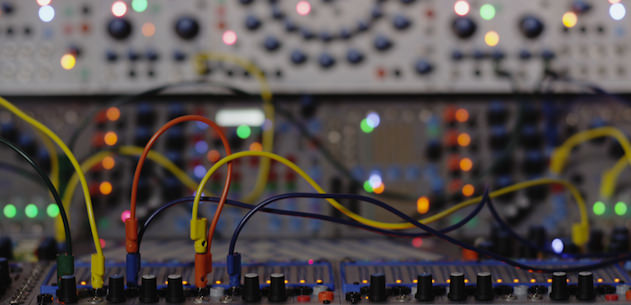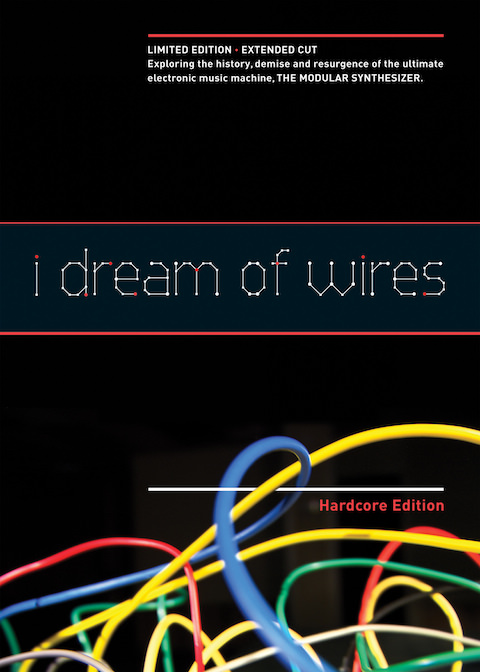Once considered virtually obsolete, modular synths have been one of the most surprising growth areas in music technology over the last decade. We speak to a group of top producers and module designers to discover why modular synthesis has risen from the dead, and to ask whether you’re missing out if you don’t get involved.

Buchla modular synth featured in ‘I Dream Of Wires’
Since the birth of experimental electronic music, the history of music technology has been one of constant progression, relentless development and lightning-quick evolution.
For proof, look back 15 years and consider how primitive music software was in comparison to what’s on offer today. Consider the explosion in mobile music-making tools sparked by Apple’s iOS. Consider how hardware and software have plummeted in price over the course of the last few decades as manufacturers have developed newer, more powerful products at an alarming rate.
This unstoppable upward trend is interrupted by one significant anomaly: one of the biggest growth areas in electronic music equipment over the last decade has been the modular synthesiser market – a sector which had previously been on the decline since the late 1960s.
For those who are unclear on the terminology, let’s first clarify what we mean here by modular synth. Broadly speaking, the term refers to any synthesis method which allows discrete modules – oscillators, filters, modulation sources – to be connected together in flexible, customisable ways. That includes software synths like Native Instruments’ Reaktor and U-He’s ACE, or digital hardware like the Clavia Nord Modular.
But, to the purists, software and semi-modular synths don’t even register on the modular radar. The classic modular synth is a mess of patch cables, sockets and knobs. It’s about control voltages, trigger signals and audio routed haphazardly around a bank of equipment which could fill an entire room. To many, a modular synth is an exclusively analogue affair, with a distinctly, unashamedly
, retro flavour – although, as we’ll see, that’s now changing thanks to forward-thinking manufacturers introducing digital modules and systems to integrate modular equipment with modern, software-based studios.
Modular synthesis is still a niche market. Chances are you won’t have seen one in your local music shop – unless you happen to live near a specialist like Schneiders Buero in Berlin (or its diminutive east London offshoot at Rough Trade), Switched On in Austin, Texas, or Analogue Haven in Pomona, California.
Statistically speaking, chances are your favourite artist doesn’t use a modular synth either. But the climate is gradually changing as musicians and producers begin to realise that modular synths don’t have to be overwhelmingly complex or expensive, and that the synthesis and signal processing options offered by modular systems are virtually impossible to achieve through any other means.
I Dream Of Wires
 Jason Amm has been releasing music as Solvent since 1997 on labels including Ghostly International, Morr Music and his own Suction Records. But for the last three years Amm has been working on a very different project.
Jason Amm has been releasing music as Solvent since 1997 on labels including Ghostly International, Morr Music and his own Suction Records. But for the last three years Amm has been working on a very different project.
“I’ve been very much obsessed with electronic music and synthesisers for most of my life,” Amm explains. “So much so that I actually avoided getting into modular synthesisers for a long time, for fear that the obsession would lead to more tinkering and less producing. When the filmmaker Robert Fantinatto told me about his idea for a modular synth documentary, we had a discussion about my apprehension towards getting into modulars. Of course, I had been wanting to get into them all along, so he asked if I’d be interested in hosting the film, where it would be centred around my journey. Soon enough it really became a full-on collaboration.”
The result of Fantinatto and Amm’s efforts is I Dream Of Wires, a comprehensive history of the modular synthesiser. The film will be released as a special edition four-hour ‘hardcore edition’ cut on Blu-Ray and DVD in June, to be followed by an 85-minute theatrical release later in the year.
I’ve been very much obsessed with electronic music and synthesisers for most of my life.
The documentary, named after the 1980 Gary Numan track, tells the story of the exponential growth of modular synthesis over the last decade and investigates the unique appeal of modular gear, with contributions from a host of well-known modular synth enthusiasts including Carl Craig, John Tejada, Legowelt, Vince Clarke, Deadmau5, James Holden and, of course, Numan himself.
03.44 AM
Hell yes! Great article. Can’t wait for the doc.
08.40 PM
I am in the process of falling into the abyss. I fear it will be a magnificent obsession for me.
06.47 AM
Funny watched this movie on Netflix over a buddies house and seen myself in it, even one of the guys had same look as me. I can relate with fighting with the outside world to return to my modular cave. Haha
In fact it was all rocket science to my buddy, although to me everything these geeks and modular synth scientist said made sense.